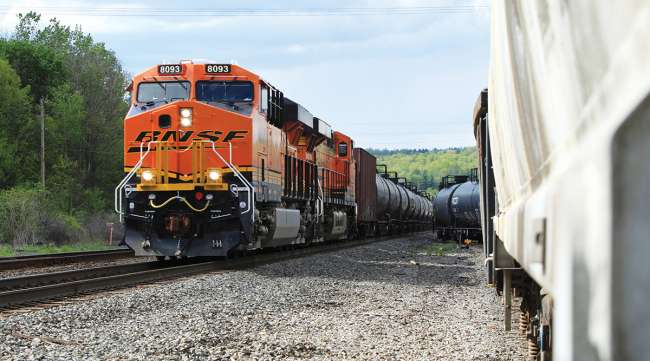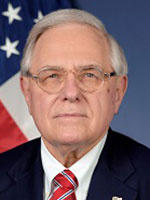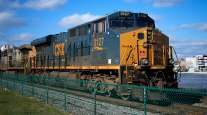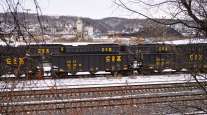Senior Reporter
AAR: PTC Implementation for Freight Railroads Almost Finished

[Stay on top of transportation news: Get TTNews in your inbox.]
Implementation of automatic braking technology for freight railroads is nearly complete, an industry group indicated recently.
As of 2019, 98.5% of positive train control, or PTC, technology was operational on the required route miles for Class I railroads, the Association of American Railroads announced. Specifically, the technology was operational through 53,001 miles of the 53,676 miles mandated.
An investment of more than $11 billion in developing and installing the technology facilitated the implementation, according to AAR. Railroad operators are required to have the technology operational by the end of this year.

Jefferies
“America’s freight railroads will finish the job on PTC by the final December 2020 deadline,” Ian Jefferies, the group’s CEO, said Jan. 28. “PTC, coupled with other advanced technologies, drives down risk and fuels railroads’ next leap forward to ensure our people, infrastructure and equipment are safer than ever. Railroads are committed to an accident-free future, and fully implementing PTC continues our industry’s progress toward that ultimate target.”
RELATED: Railroads’ PTC Implementation Progressing, FRA Announces
The Federal Railroad Administration in November affirmed rail operators continued to show progress with regard to implementation. “We remain steadfast in compelling and assisting railroads to successfully complete all steps necessary for full PTC implementation,” FRA Administrator Ronald Batory said in November. “The magnitude of this undertaking is immense, but putting PTC systems into operation demands diligence and a continued sense of urgency.”

Batory
The U.S. Department of Transportation said it has administered more than $2.5 billion for freight, intercity and commuter railroads. PTC would assist with the prevention of train-to-train collisions, overspeed derailments, the movement of trains through a switch in the wrong position, and prevent train incursions into established work zones.
“FRA has taken steps to ensure it has the necessary human resources to respond to your needs and turn critical documents around in a timely fashion,” Transportation Secretary Elaine Chao said last year. “The role that railroads play in our country cannot be overstated.”
On Capitol Hill, transportation leaders pressed regulators to fulfill the technology’s installation. Commerce Committee Chairman Roger Wicker (R-Miss.), whose panel examined the matter last year, indicated, “Full PTC implementation requires, among other things, that railroads be interoperable or, in other words, they must be able to operate seamlessly across tracks owned by different railroads.”

Cantwell
The Commerce Committee’s ranking Democrat, Sen. Maria Cantwell of Washington, said at the same hearing last year: “I’m pleased that Chairman Wicker shares my commitment to making sure that 2020 is a full PTC implementation deadline and that this committee takes its oversight role seriously when it comes to positive train control.
“It’s unacceptable that in the year of 2019 we still have not fully implemented this important safety, and even when PTC has been fully implemented, according to the Federal Railroad Administration, there will still be miles of tracks that have not been part of PTC.”
Class I railroads include CSX Transportation Inc., Kansas City Southern, Norfolk Southern Co., BNSF Railway Co., U.S. operations of Canadian National Railway Co. and Canadian Pacific, and Union Pacific Railroad.
Want more news? Listen to today's daily briefing:




